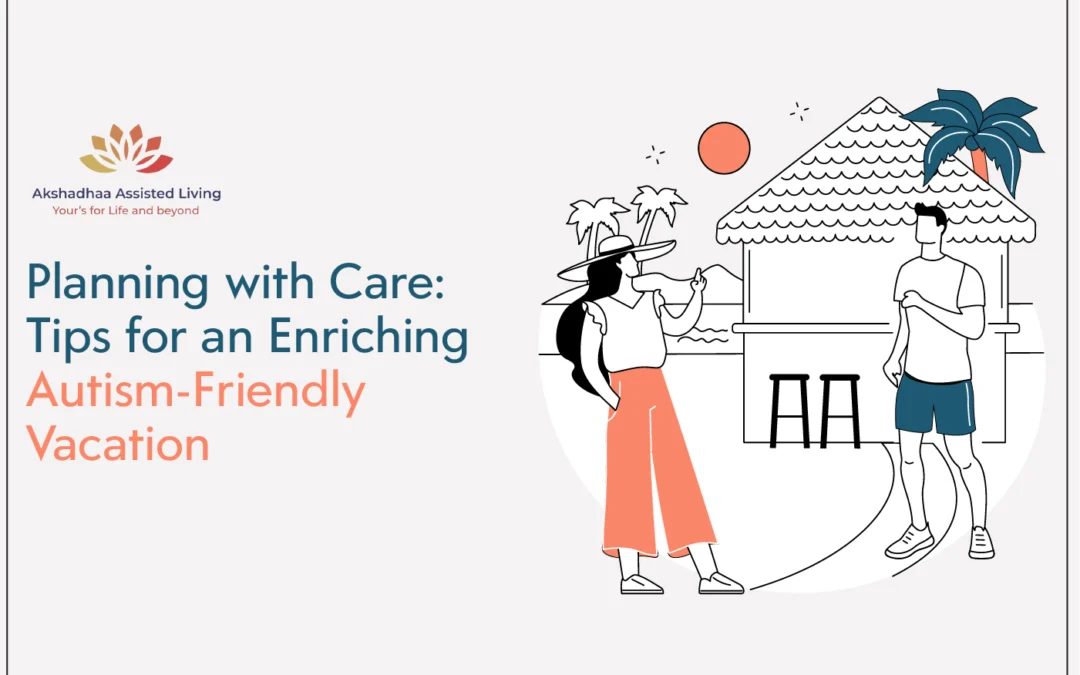How You Can Have a Memorable Holiday With Your Neurodiverse Loved One
Planning an autism-friendly vacation for children on the autism spectrum can be an incredibly rewarding experience. It provides opportunities to create cherished memories, teach life skills, and give caregivers a well-deserved break. However, thoughtful preparation is key to meeting their unique needs.
Here’s a guide to help you design a neurodiverse-friendly travel experience tailored to an autism-friendly vacation.
1. Research and Customize Your Destination For an Autism-friendly Vacation
Explore the support facilities at the destination to determine if they can meet the needs of a neurodiverse traveler. Find the following:
- Quiet rooms or sensory-friendly areas for overwhelming times
- Flexible dining options that support specific dietary requirements
- Staff competent in serving neurodiverse people
- Access-friendly layouts using minimal sensory triggers such as dim lighting, quiet settings, and safe outdoor spaces.
Plan your autism-friendly vacation by choosing places that are interesting to your loved one, such as beaches, forests, or cityscapes, to make the trip enjoyable and engaging.
2. Plan Step By Step
For a child who is new to travelling, beginning with smaller trips makes entry easy by gradually introducing the child to new routines and environments. Extending trip duration and distance helps reduce stress while making the child adapt easily. Traveling with children on the autism spectrum requires step-by-step approaches in order to make the journey both comfortable and fun.
3. Prepare for Sensory Stimuli
New environments often bring unfamiliar sensory inputs that can feel overwhelming. To prepare for an autism-friendly vacation:
- Show them photos or videos of the destination to set expectations.
- Discuss scenarios like airplane sounds, crowded spaces, or unfamiliar hotel rooms.
- Pack sensory-friendly items like noise-canceling headphones, weighted blankets, or fidget toys for comfort.
Being prepared is essential when traveling with children on the neurodiverse spectrum to help them navigate new settings with ease.
4. Packing Soothing Tools and Strategies
Travel plans can encounter unexpected challenges, so having soothing tools on hand is essential.
- Prepare a “comfort kit” with favorite toys, books, and sensory aids.
- Pack your snacks, especially for specific dietary needs or sensitivities for your child.
- Practice calming techniques like deep breathing or soothing music. Plan downtime activities, such as quiet hotel stays or nature walks.
- Bring communication tools like Augmentative and Alternative Communication (AAC) devices for effective interaction in unfamiliar settings.
- Bring a UDID card (Unique Disability ID) for safety purposes. This card, used as a badge or tag, can be crucial in crowded places or if the child gets lost.
These strategies are invaluable for maintaining comfort during an autism-friendly vacation.
5. Creating Positive Memories and Life Lessons
Travel is an excellent opportunity to learn some really valuable skills while making lifelong memories.
- Make your vacation more meaningful by involving your child in the planning process. Allow them to choose activities or destinations they enjoy.
- Celebrate small achievements, such as trying new foods or exploring unfamiliar places, and capture these moments with photos or videos for positive reinforcement.
- Focus on the joy of discovery and their sense of accomplishment to create a meaningful experience. An autism-friendly vacation becomes truly fulfilling when it emphasizes exploration and personal growth.
An autism-friendly vacation is both meaningful and fulfilling when focusing on the joy of discovery and a sense of accomplishment.
6. Don’t Forget Caregiver Respite
A holiday also needs to rejuvenate the energies of caregivers.
- Choose accommodations that have respite services or child-friendly activities.
- Schedule breaks where family or friends can look after your child as you relax.
- Appreciate little moments of respite, like a quiet coffee or a peaceful walk.
Self-care is just as important for creating a successful autism-friendly vacation.
Final Thoughts
Traveling with an autistic child is associated with some pros and cons; it could, however be a potential learning platform for the two and just plain fun. Preparation is essential; employ some sensory-friendly techniques and are supportive. These factors will enhance traveling experiences as well as creating family memories, not just for the child.
Pack your bags, get ready for the adventure, and create lasting memories, because every child deserves the joy of exploration and discovery, especially when travel is inclusive and considerate.
At Akshadhaa Assisted Living we are excited to facilitate special needs individuals, families and friends to enjoy a fulfilling vacation or an extended staycation at our facility located close to Bangalore International Airport.
For more details in this regard, please write to us at anirban@akshadhaafoundation.org or call us at +919845043599
Follow us for more insights Linkedin

